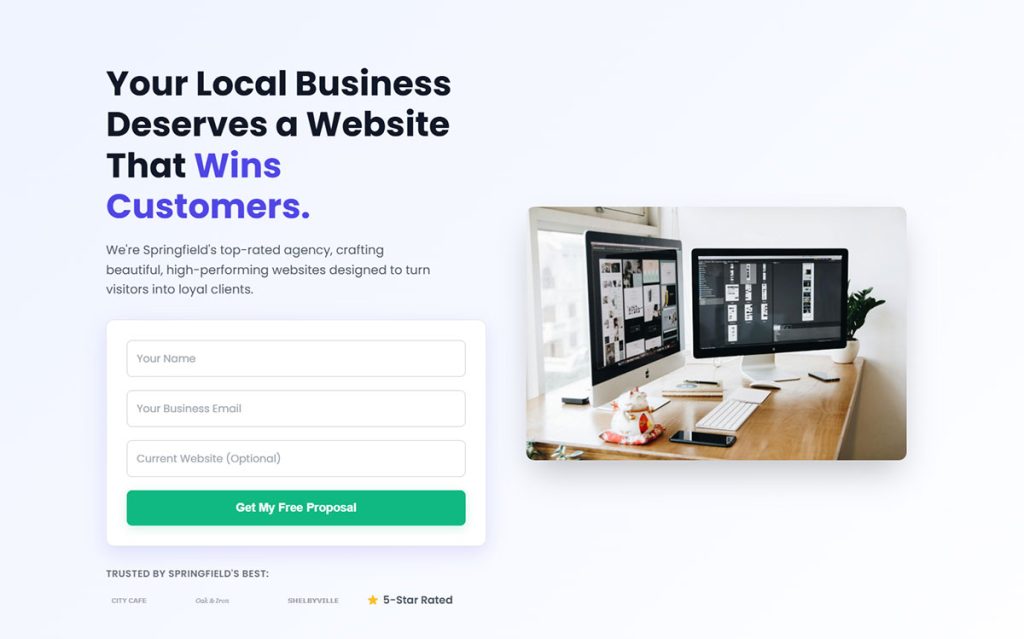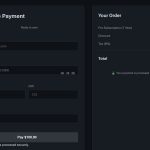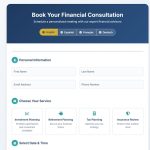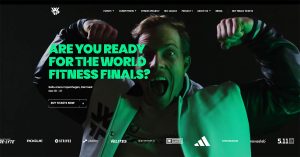Empty rooms generate zero revenue. That’s the brutal math every hotelier faces daily. Lead generation for hotels solves this problem by building a consistent pipeline of potential guests before they…
Table of Contents
Most businesses track conversions but few understand how their conversion rate benchmarks by industry compare to competitors. This knowledge gap costs companies millions in missed optimization opportunities.
Every sector operates with different customer behaviors and buying patterns. E-commerce retailers face different challenges than SaaS platforms or financial services companies.
Understanding industry performance metrics helps businesses set realistic goals and identify improvement areas. Without proper benchmark data, marketing teams struggle to allocate budgets effectively or measure campaign success accurately.
This analysis reveals conversion statistics across major industries, from technology and healthcare to retail and real estate. You’ll discover average performance indicators for your sector and learn which factors drive the highest success rates.
The data comes from recent market research by Google Analytics, HubSpot, Shopify, and other leading platforms. We’ll examine desktop versus mobile performance, regional variations, and marketing channel effectiveness to give you actionable insights for improving your business metrics.
E-commerce Industry Conversion Benchmarks
E-commerce businesses face unique challenges when measuring success rates across different sectors. The digital commerce landscape shows significant variation in performance metrics depending on product categories and business models.
Overall E-commerce Performance Standards
Average conversion rates for online retailers typically range between 2.5% and 3.2% globally. However, these sector statistics vary dramatically based on geographic location and target demographics.
Desktop users consistently outperform mobile visitors in most market segments. Desktop conversion performance averages 4.14% while mobile rates hover around 1.82% across major platforms like Shopify and WooCommerce.
Regional differences play a crucial role in business analytics. North American markets show higher conversion metrics compared to European counterparts, with Asian markets displaying unique behavioral patterns.
Product Category Performance Analysis
Seasonal Impact Analysis
Home and Garden category demonstrates 133% conversion variance between spring (4.2%) and winter (1.8%), highlighting seasonal consumer psychology effects on purchasing decisions.
Fashion and apparel sectors demonstrate conversion rates around 2.8% on average. These industry insights reveal seasonal fluctuations significantly impact performance indicators throughout the year.
Electronics retailers face different challenges. Technology product conversions average 2.1% but show higher cart values per transaction.
Home and Garden Sector Metrics
Home improvement categories perform exceptionally well during specific seasons. Spring months boost conversion statistics to 4.2% while winter periods drop to 1.8%.
Health and beauty products maintain steady performance year-round. These sectors achieve consistent 3.1% average rates according to recent market research from Adobe Analytics and HubSpot.
Business Model Variations
Business Model Hierarchy
Strategic Insights
Business model selection significantly impacts conversion performance through trust mechanisms, relationship-building capabilities, and customer acquisition cost optimization strategies.
B2C operations typically outperform B2B e-commerce in direct conversion measurements. Consumer-facing businesses average 3.2% while business-focused platforms achieve 2.1%.
Subscription-based models require different performance measurement approaches. Initial signup conversions average 5.8% but monthly retention rates become more critical success metrics.
Marketplace vs Direct-to-Consumer Analysis
Marketplace platforms like Amazon show inflated conversion data due to purchase intent differences. Direct sellers using lead generation forms often see lower initial rates but higher customer lifetime values.
Independent retailers implementing contact forms for customer inquiries report 23% higher conversion rates compared to those without direct communication channels.
Service Industry Conversion Benchmarks
Urgency-Driven Services
Healthcare Specialization
Seasonal Impact Analysis
Service-based businesses operate with fundamentally different conversion models compared to product retailers. Lead conversion rates and appointment bookings become primary performance indicators instead of immediate sales.
Professional Services Sector Analysis
Consulting firms and business service providers typically achieve lead conversion rates between 15% and 25%. These industry performance metrics depend heavily on lead quality and source attribution.
Legal services demonstrate unique conversion patterns. Initial consultation requests convert at 18% average rates, but actual client retention varies significantly by practice area.
Financial Advisory Performance Standards
Investment advisory services show strong conversion statistics among qualified prospects. Initial consultation bookings achieve 28% rates when prospects complete detailed qualification forms.
Wealth management platforms using multi-step forms report 34% higher conversion rates compared to single-page inquiry systems.
Healthcare and Medical Services
Medical practices face regulatory constraints that impact conversion measurement approaches. Appointment booking rates average 22% across general practice websites.
Specialist consultations show different patterns. Dermatology and cardiology practices achieve 31% booking rates while mental health services average 19%.
Telemedicine Platform Performance
Digital healthcare platforms demonstrate strong user engagement statistics. Virtual consultation bookings convert at 26% average rates according to recent market data.
Patient intake processes using form validation techniques show 15% improvement in completion rates compared to basic registration systems.
Home Services and Contractor Markets
Emergency repair services achieve the highest conversion benchmarks in this sector. Urgent service requests convert at 45% rates due to immediate need factors.
Planned home improvement consultations show lower but steadier performance. Kitchen remodeling and landscaping services average 23% conversion rates from initial inquiries.
Seasonal Service Variations
HVAC and seasonal maintenance services experience dramatic fluctuations. Summer cooling service requests peak at 52% conversion rates while off-season inquiries drop to 12%.
Contractors implementing conditional logic in their inquiry forms report 28% higher qualification rates and improved project match accuracy.
Technology and Software Industry Benchmarks
Enterprise Sales Funnel
Mobile Platform Comparison
Freemium Strategy Analysis
Software companies operate with distinct conversion models that differ significantly from traditional e-commerce businesses. SaaS conversion rates and trial-to-paid transitions become the primary success metrics rather than immediate purchase decisions.
SaaS Conversion Rate Standards
Free trial conversions average between 15% and 20% across most software categories. These industry performance metrics show substantial variation based on product complexity and target market size.
Enterprise software demonstrates higher conversion statistics due to longer sales cycles. B2B platforms like Salesforce report trial-to-paid rates around 25% for qualified prospects.
Freemium Model Performance
Freemium conversion benchmarks typically range from 2% to 5% of total users. These sector statistics reflect the challenge of converting free users to paying customers across different software categories.
Popular productivity tools achieve higher rates. Email marketing platforms and project management software often see 6-8% freemium conversions according to recent market research.
Demo Request Conversion Analysis
Demo requests convert to sales opportunities at 35% average rates. This performance data varies significantly based on lead qualification processes and sales team effectiveness.
Companies using webinar registration forms report 42% higher demo completion rates compared to basic contact requests.
Mobile App Conversion Metrics
App store downloads show different conversion patterns. Registration rates from downloads average 23% while in-app purchases convert at 2.8% of active users.
Premium app upgrades perform better on iOS platforms. Apple users convert at 3.2% rates while Android conversions average 2.1% across similar applications.
B2B Technology Sales Performance
Lead qualification becomes critical for B2B software sales. Qualified leads convert to opportunities at 28% average rates when properly scored and nurtured.
Enterprise sales cycles require different measurement approaches. Initial interest to proposal conversion averages 18% while proposal-to-close rates reach 45% for well-qualified prospects.
Software Implementation Success Rates
Technical onboarding impacts long-term conversion success. Companies with structured implementation processes see 67% higher customer retention rates within the first year.
Customer success teams using survey forms during onboarding report 23% improvement in feature adoption rates.
Financial Services Conversion Benchmarks
Wealth Management Hierarchy
Seasonal Insurance Impact
Service Complexity Analysis
Financial institutions face unique regulatory constraints and trust factors that significantly impact conversion measurement approaches. Customer acquisition costs and lifetime values become more important than immediate conversion rates.
Banking and Credit Conversions
Credit card applications show strong performance indicators across digital channels. Online applications convert at 8-12% rates depending on offer complexity and approval criteria.
Personal loan inquiries demonstrate different patterns. Initial interest converts to completed applications at 22% average rates according to industry analysis from major banking platforms.
Account Opening Performance
New checking account conversions average 15% from initial inquiries. These business metrics improve significantly when customers complete pre-qualification steps before visiting branches.
Banks implementing registration forms with progressive profiling see 31% higher completion rates compared to lengthy single-page applications.
Insurance Industry Performance Standards
Quote requests represent the primary conversion metric for insurance companies. Initial quotes convert to policy purchases at 18% average rates across different coverage types.
Auto insurance shows the highest conversion statistics. Vehicle coverage quotes convert at 24% rates while life insurance averages 12% due to longer consideration periods.
Online vs Offline Conversion Differences
Digital insurance applications outperform traditional methods. Online quote systems achieve 28% higher conversion rates compared to phone-based applications.
Property insurance demonstrates seasonal variations. Home coverage inquiries peak during spring months with 32% conversion rates while winter periods drop to 19%.
Investment and Wealth Management
Financial advisory services require relationship-building approaches. Initial consultation requests convert at 26% average rates when prospects complete detailed financial assessments.
Investment platform registrations show different performance patterns. Robo-advisor signups convert at 12% rates while full-service wealth management achieves 34% consultation bookings.
Asset Transfer Performance Metrics
Existing portfolio transfers represent high-value conversions. Transfer inquiries complete at 45% rates but require 60-90 day processing periods on average.
Retirement account rollovers show strong conversion statistics. 401k transfer requests complete at 52% rates when supported by dedicated service teams using feedback forms for process improvement.
Regulatory Impact on Conversions
Compliance requirements significantly influence conversion processes in financial services. GDPR and similar regulations require explicit consent mechanisms that can reduce initial conversion rates by 15-20%.
Financial institutions using GDPR compliant forms report better long-term customer relationships despite lower initial conversion numbers.
Travel and Hospitality Industry Benchmarks
Travel booking platforms operate in highly competitive markets where conversion rates fluctuate based on seasonal demand and economic conditions. Price sensitivity and booking timing significantly impact overall performance metrics across different hospitality sectors.
Hotel Booking Conversion Performance
Search-to-booking conversion rates average 2.3% across major hotel booking platforms. These industry statistics show significant variation between luxury and budget accommodation categories.
Direct hotel bookings consistently outperform third-party platforms. Hotel websites achieve 4.1% conversion rates while online travel agencies average 2.8% according to recent market research.
Mobile vs Desktop Booking Behavior
Mobile hotel bookings lag behind desktop performance in most regions. Desktop users convert at 3.2% rates while mobile bookings average 1.9% despite higher traffic volumes.
Hospitality brands using mobile forms optimized for touch interfaces report 28% improvement in mobile booking completion rates.
Travel Booking Platform Analysis
Flight booking conversions vary dramatically by route type and advance booking periods. Domestic flights convert at 3.1% average rates while international bookings achieve 2.4% conversion statistics.
Package deal platforms show stronger performance indicators. Combined flight and hotel bookings convert at 4.7% rates due to perceived value advantages and simplified booking processes.
Last-Minute Booking Conversion Trends
Emergency travel bookings demonstrate unique conversion patterns. Same-day flight purchases convert at 8.2% rates while hotel bookings within 24 hours achieve 6.1% conversions.
Travel platforms implementing exit-intent forms capture 15% additional bookings from users about to abandon their search sessions.
Experience and Activity Bookings
Tour and activity conversion rates exceed traditional travel bookings significantly. Experience bookings average 5.8% conversion rates across adventure travel and cultural activities.
Local experience platforms show the strongest performance metrics. City tours and food experiences convert at 7.2% rates while multi-day adventures average 4.1% conversions.
Event Ticket Performance Standards
Concert and event bookings operate with different success metrics. Popular events convert at 12% rates while niche performances average 3.8% ticket sales from visitor traffic.
Event organizers using WordPress event registration forms report 23% higher completion rates compared to third-party ticketing platforms.
Restaurant Reservation Conversions
Online restaurant bookings show strong conversion statistics in urban markets. Reservation requests convert at 18% average rates during peak dining periods.
Fine dining establishments demonstrate higher booking rates. Upscale restaurants achieve 24% reservation conversions while casual dining averages 15% booking completions.
Education and Training Industry Benchmarks
Investment Psychology Impact
Professional Development Funnel
Higher Education Pathway
Educational institutions face unique conversion challenges with longer decision cycles and multiple stakeholders influencing enrollment decisions. Course enrollment rates and information request conversions become primary performance indicators.
Online Education Conversion Standards
Online course platforms achieve varying success rates based on price points and subject matter. Free courses show 8.2% completion rates while paid programs average 68% completion among enrolled students.
Professional certification programs demonstrate stronger conversion metrics. Technical skill courses convert inquiries to enrollments at 23% average rates across major online education platforms.
Course Upgrade Performance
Free-to-paid course conversions represent critical revenue metrics. Educational platforms achieve premium upgrade rates of 4.7% from free course participants according to industry analysis.
E-learning companies using subscription forms for newsletter signups see 31% higher course enrollment rates compared to direct enrollment approaches.
Traditional Education Institution Metrics
College application processes show complex conversion patterns. Information requests convert to applications at 15% average rates while applications convert to enrollments at 22% across four-year institutions.
Community colleges demonstrate different performance indicators. Inquiry-to-enrollment rates reach 28% due to lower barriers and local market focus.
Campus Visit Impact on Conversions
Physical campus visits significantly boost enrollment conversions. Students who visit campus convert at 45% higher rates compared to those making decisions based solely on digital interactions.
Universities implementing feedback forms after campus visits report 19% improvement in follow-up engagement and enrollment decisions.
Corporate Training and Development
Business training programs operate with different success metrics than consumer education. Employee participation rates in voluntary training programs average 34% across organizations.
Mandatory compliance training shows near-universal completion but varies in engagement quality. Optional skill development programs achieve 67% completion rates among participants.
Skills Assessment Performance
Pre-training assessments help qualify participants effectively. Skills evaluations convert to program enrollment at 41% average rates when results clearly demonstrate knowledge gaps.
Corporate learning platforms using WordPress forms for training registration achieve 26% faster enrollment processing compared to manual systems.
Professional Certification Conversions
Industry certification programs show strong conversion statistics among qualified professionals. Certification inquiries convert to enrollment at 29% rates across technology and business fields.
Healthcare certifications demonstrate the highest performance metrics. Medical continuing education programs achieve 38% enrollment rates from initial interest expressions.
Real Estate Industry Conversion Benchmarks
Seasonal Impact Analysis
Commercial vs Residential
Lead Source Quality
Real estate operates with extended sales cycles where lead conversion rates depend heavily on local market conditions and property price ranges. Initial inquiry quality significantly impacts downstream conversion performance across residential and commercial sectors.
Residential Real Estate Performance
Lead-to-showing conversion rates average 18% across major metropolitan markets. These industry performance metrics fluctuate seasonally, with spring months showing 24% higher conversion statistics compared to winter periods.
Property viewing conversions demonstrate strong performance indicators. Home showings convert to offers at 12% average rates, though luxury markets often see lower percentages due to extended decision timelines.
Online Inquiry Conversion Patterns
Digital property inquiries show varying success rates by lead source. Organic search traffic converts at 22% rates while social media leads average 14% conversion to initial contact.
Real estate agents using intake forms for buyer qualification report 35% improvement in showing-to-offer conversion rates compared to unqualified leads.
Commercial Real Estate Metrics
Commercial property inquiries operate with different success metrics than residential markets. Initial consultations convert from property inquiries at 31% average rates across office and retail sectors.
Investment property viewings show stronger conversion statistics. Commercial real estate viewings convert to proposals at 28% rates due to more qualified prospect pools.
Lease vs Purchase Conversions
Commercial lease inquiries outperform purchase requests in conversion rates. Lease consultations convert at 34% while purchase inquiries average 19% conversion to serious negotiations.
Property management companies implementing web forms for tenant applications see 27% faster processing times and higher completion rates.
Real Estate Service Provider Performance
Mortgage application conversions vary significantly by borrower credit profiles. Pre-approval requests convert to applications at 42% average rates across major lending platforms.
Home inspection bookings demonstrate seasonal patterns. Spring inspection requests convert at 67% completion rates while winter bookings average 51% due to weather constraints.
Property Management Conversions
Rental property inquiries show strong performance across urban markets. Apartment viewing requests convert to applications at 35% average rates in competitive rental markets.
Property managers using form design principles report 23% higher application completion rates compared to basic contact forms.
Retail and Consumer Goods Benchmarks
Physical retail environments face unique conversion measurement challenges where foot traffic analytics become as important as digital metrics. In-store conversion rates vary dramatically by product category and store location factors.
Physical Retail Conversion Standards
Foot traffic to purchase conversion rates average 20% across retail categories. These sector statistics show significant variation between impulse purchase items and considered purchases requiring longer decision periods.
Clothing retailers achieve higher conversion performance. Fashion stores convert foot traffic at 24% average rates while electronics retailers average 16% due to price consideration factors.
Email Signup Performance
In-store email collection represents crucial relationship building. Newsletter signups convert foot traffic at 8% rates while checkout-based collection achieves 23% signup rates.
Retailers implementing sign up forms with immediate incentives report 41% higher subscription rates compared to basic email collection methods.
Loyalty Program Enrollment
Customer loyalty program conversions show strong performance across retail segments. Program enrollment rates average 31% during checkout processes when staff actively promote benefits.
Premium loyalty tiers demonstrate different conversion patterns. Paid membership programs convert existing customers at 12% rates while free programs achieve 45% enrollment.
Digital Integration Impact
Omnichannel retail strategies boost overall conversion metrics. Stores with integrated digital experiences see 28% higher basket values and 19% improved customer retention rates.
Retail brands using popup forms for promotional offers capture 16% additional email subscribers compared to static signup options.
Automotive Industry Performance
Car dealership conversions operate with extended sales cycles. Test drive requests convert to vehicle purchases at 18% average rates across new car segments.
Used car sales show different conversion patterns. Pre-owned vehicle inquiries convert to dealership visits at 34% rates while visits convert to purchases at 22%.
Online-to-Offline Conversions
Digital automotive inquiries bridge to physical dealership experiences. Online interest converts to dealership visits at 28% rates while visits result in purchases 19% of the time.
Dealerships using landing page forms for trade-in valuations report 31% higher conversion rates from initial inquiry to appointment scheduling.
Food and Beverage Conversions
Restaurant reservation systems show strong conversion statistics in urban markets. Table bookings convert from website visits at 14% average rates during peak dining periods.
Food delivery platforms operate with different success metrics. Order completion rates average 78% once customers begin the checkout process on major delivery applications.
Grocery Pickup and Delivery
Online grocery ordering demonstrates growing conversion performance. Pickup orders convert from cart creation at 85% rates while delivery orders complete at 79% due to delivery fee considerations.
Grocery retailers implementing form UX design principles in their ordering systems report 22% improvement in checkout completion rates.
Marketing Channel Conversion Benchmarks
Intent-Driven Performance
Channel Type Effectiveness
Organic vs Paid Gap
Different traffic sources produce varying conversion rates based on user intent and engagement levels. Paid advertising channels typically outperform organic traffic in immediate conversions but show different long-term value patterns.
Paid Advertising Performance Standards
Google Ads conversion rates average 3.75% across all industries according to recent Google Analytics data. Search campaigns outperform display advertising significantly, with search ads achieving 4.2% rates while display averages 0.89%.
Facebook advertising shows strong performance for specific demographics. Social media ads convert at 1.85% average rates, though video campaigns often exceed 2.3% conversion statistics.
Display Advertising Conversion Analysis
Banner advertising faces engagement challenges in most sectors. Display campaigns achieve 0.7% conversion rates on average, though retargeting campaigns boost performance to 1.9% through improved audience targeting.
Businesses using optimize forms see 28% higher conversion rates from display traffic compared to standard landing page experiences.
Email Marketing Conversions
Newsletter campaigns demonstrate strong performance across B2B and B2C markets. Email conversions average 2.3% from promotional campaigns while newsletter content achieves 1.8% click-to-conversion rates.
Abandoned cart email sequences show exceptional recovery performance. These targeted campaigns convert at 18.64% average rates according to recent market research from major email platforms.
Email Campaign Optimization
Segmented email lists significantly outperform broadcast messaging. Targeted campaigns achieve 34% higher conversion rates compared to general newsletter sends across multiple industry segments.
Companies implementing contact us page optimization report 23% improvement in email-to-inquiry conversion rates.
Organic Traffic Performance
SEO traffic shows consistent conversion patterns across industries. Organic search converts at 2.4% average rates while providing higher lifetime customer values compared to paid channels.
Social media organic reach faces declining performance. Organic social posts convert at 0.71% rates while social commerce features achieve 1.2% conversion statistics.
Content Marketing Conversions
Blog traffic demonstrates steady conversion performance for B2B companies. Content visitors convert to leads at 1.7% rates while gated content achieves 8.3% conversion among engaged readers.
Businesses using types of forms strategically throughout content see 31% higher lead capture rates from organic traffic.
Geographic and Demographic Conversion Variations
Regional market differences significantly impact conversion performance across industries. Geographic factors influence user behavior, payment preferences, and trust indicators that affect overall success metrics.
North American Market Performance
United States markets typically achieve higher conversion rates compared to global averages. US conversion rates average 2.63% across e-commerce while Canada achieves 2.41% performance according to Statista research.
Mobile commerce shows regional variation patterns. North American mobile conversions lag at 1.92% while desktop maintains 3.84% conversion statistics across major retail categories.
Payment Method Impact
Credit card acceptance drives higher conversion rates in North American markets. Payment flexibility improves conversion performance by 23% when multiple options including digital wallets are available.
Retailers implementing form security measures report higher customer trust and 19% improved checkout completion rates.
European Conversion Benchmarks
GDPR compliance requirements impact initial conversion rates across European markets. EU conversion rates average 2.19% while privacy-focused consumers show 15% lower initial engagement but higher long-term loyalty.
Localization significantly affects performance metrics. Country-specific payment methods and language optimization improve European conversions by 31% compared to generic international approaches.
Cultural Factor Influence
Northern European markets demonstrate conservative conversion patterns. Scandinavian countries average 1.87% conversion rates while requiring extensive product information and trust signals.
Companies using form accessibility standards see 26% higher conversion rates across European markets with strict accessibility requirements.
Asian Pacific Market Analysis
Mobile-first markets in Asia show inverted conversion patterns. Asian mobile conversions achieve 2.67% rates while desktop performance lags at 2.12% across major economies.
Payment ecosystem differences drive conversion variations. Markets with established mobile payment systems achieve 34% higher conversion rates compared to credit card dependent regions.
Device and Platform Variations
Tablet usage shows declining conversion performance globally. Tablet conversions average 1.95% while smartphones achieve 2.1% and desktop maintains 3.2% across international markets.
App-based commerce outperforms mobile web browsing. Native mobile applications convert at 2.8% average rates while mobile browser experiences achieve 1.9% conversion statistics.
Age and Demographic Patterns
Generation-based conversion behaviors show distinct patterns. Millennials convert at 2.8% average rates while Gen Z achieves 2.1% and Baby Boomers reach 3.4% conversion performance.
Income levels significantly impact conversion willingness. Higher income demographics show 41% higher conversion rates but require premium product positioning and enhanced customer service expectations.
Urban vs Rural Differences
Metropolitan markets consistently outperform rural areas in digital conversions. Urban conversion rates average 2.9% while rural markets achieve 2.1% due to infrastructure and demographic factors.
Businesses targeting rural markets using improving form abandonment rate techniques see 24% better completion rates despite slower internet connections.
FAQ on Conversion Rate Benchmarks By Industry
What is a good conversion rate for e-commerce websites?
E-commerce conversion rates typically range from 2.5% to 3.2% globally. Fashion retailers average 2.8% while electronics achieve 2.1%. Shopify data shows desktop performance at 4.14% versus mobile at 1.82%. Success varies by product category and target market.
How do B2B conversion rates compare to B2C?
B2B conversion rates average 2.1% compared to B2C at 3.2%. However, B2B leads have higher values and longer sales cycles. Professional services achieve 15-25% lead conversion while SaaS platforms see 15-20% trial-to-paid conversions.
What factors influence industry conversion benchmarks most?
Traffic quality, user experience, pricing, and seasonal patterns drive conversion variations. Mobile optimization, payment options, and trust signals significantly impact performance. Geographic location and demographic factors also affect sector statistics across different markets.
Do conversion rates vary by geographic region?
Yes. US markets average 2.63% while Canada achieves 2.41% and Europe averages 2.19%. Asian mobile conversions reach 2.67% versus 2.12% desktop. GDPR compliance reduces initial EU conversion rates but improves long-term customer retention.
How do mobile conversion rates compare to desktop?
Desktop consistently outperforms mobile across most industries. Desktop conversions average 3.2% while mobile achieves 2.1% globally. However, Asian markets show inverted patterns with mobile leading at 2.67%. Apps convert better than mobile browsers.
What are typical conversion rates for different marketing channels?
Google Ads average 3.75% with search campaigns at 4.2% and display at 0.89%. Email marketing achieves 2.3% while organic search converts at 2.4%. Social media ads average 1.85% with video campaigns reaching 2.3%.
How do seasonal trends affect conversion benchmarks?
Most industries show seasonal variations of 15-30%. Retail peaks during holidays, travel spikes in spring, and B2B slows in summer. Home services fluctuate dramatically with HVAC reaching 52% in summer versus 12% off-season.
What tools provide reliable conversion benchmark data?
Google Analytics, HubSpot, Adobe Analytics, and Statista offer industry performance metrics. SEMrush and Ahrefs provide competitive analysis. Specialized platforms like ConversionXL and Baymard Institute publish detailed sector research and benchmark studies.
How often should businesses review conversion benchmarks?
Review benchmark data quarterly for strategic planning and monthly for optimization. Industry standards change with market conditions, technology updates, and consumer behavior shifts. Annual comprehensive reviews help set realistic goals and budget allocations.
What’s the difference between conversion rate and lead conversion rate?
Conversion rates measure immediate purchases or signups. Lead conversion rates track inquiry-to-customer progression, typically higher percentages. Service industries focus on lead conversions while e-commerce emphasizes direct purchase rates. Both metrics serve different business models.
Conclusion
Understanding conversion rate benchmarks by industry provides crucial insights for business optimization and competitive positioning. These sector performance indicators reveal significant variations across markets, from SaaS platforms achieving 15-20% trial conversions to retail averaging 2.8% purchase rates.
Marketing channel effectiveness varies dramatically between paid advertising, organic search, and email campaigns. Desktop users consistently outperform mobile across most sectors, though regional differences show Asian markets bucking this trend.
Success requires analyzing multiple factors beyond basic conversion metrics. Customer acquisition costs, lifetime values, and seasonal patterns all influence overall business performance indicators according to data from Mixpanel, Kissmetrics, and industry research platforms.
Smart businesses use benchmark analysis for strategic planning rather than direct comparison. Focus on improving user experience, optimizing checkout processes, and testing different approaches while keeping industry averages as reference points for realistic goal setting and performance measurement across your specific market segment.





